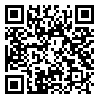Volume 14, Issue 4 (Winter 2020)
Salmand: Iranian Journal of Ageing 2020, 14(4): 462-477 |
Back to browse issues page
Download citation:
BibTeX | RIS | EndNote | Medlars | ProCite | Reference Manager | RefWorks
Send citation to:



BibTeX | RIS | EndNote | Medlars | ProCite | Reference Manager | RefWorks
Send citation to:
Yahyavi Dizaj J, Tajvar M, Mohammadzadeh Y. The Effect of the Presence of an Elderly Member on Health Care Costs of Iranian Households. Salmand: Iranian Journal of Ageing 2020; 14 (4) :462-477
URL: http://salmandj.uswr.ac.ir/article-1-1668-en.html
URL: http://salmandj.uswr.ac.ir/article-1-1668-en.html
1- Department of Health Management & Economics, school of public health, Tehran University of Medical Sciences, Tehran, Iran , jyahyavi@razi.tums.ac.ir
2- Department of Health Management & Economics, school of public health, Tehran University of Medical Sciences, Tehran, Iran
3- Department of Economic Sciences, School of Economics, Urmia University, Urmia, Iran.
2- Department of Health Management & Economics, school of public health, Tehran University of Medical Sciences, Tehran, Iran
3- Department of Economic Sciences, School of Economics, Urmia University, Urmia, Iran.
Abstract: (8024 Views)
Objectives Over the past few decades, Iran has faced rapid demographic changes, including a sharp decline in birth rates and increased life expectancy. This has led to an increase in the average age of the population and an increase in the percentage of the elderly people which is called “the phenomena of aging”. The occurrence of this phenomenon in Iran is rapidly increasing, and therefore the Iranian community has limited opportunity to prepare for the aging challenges. One of the major challenges for the aging population is the rising health care costs due to the elderly's need for a variety of health services, which causes many households with elderly members to face significant economic problems. This study aims to evaluate the effect of the presence and age of elderly members on health care costs of the households in Iran.
Methods & Materials This study is a secondary analysis using 2016 national household, expenditure and income survey data . Sample size was 19337 households in rural areas and 18809 households in urban areas (total= 38146) in Iran. Linear regression analysis in STATA V. 14 was used to test the effect of variables on health care costs of households with and without elderly members.
Results There was a significant association between the presence of an elderly member in the household and increase in total health care expenditure and medical expenses, such that for one increase in the number of elderly members, total health care expenditure increased by 390,000 Tomans, and medical expenses increased by 195,000 Tomans. In terms of age, families with an elderly member aged 75-79 years had the highest care costs, while those with an elderly member aged 80 and more had the least cost increase. Moreover, household income, having a smoker member, having an income-earner member, living in urban areas, household head education, and health development rate of the province of residence had significant association with total health care expenditure and medical expenses of households. However, no association was found between having health insurance and medical expenses.
Conclusion Since the presence of an elderly member significantly increase the household health costs, future policies should be planned to support the families with elderly members. The health care system of Iran should also be prepared to meet to the health and medical needs of future ageing population.
Methods & Materials This study is a secondary analysis using 2016 national household, expenditure and income survey data . Sample size was 19337 households in rural areas and 18809 households in urban areas (total= 38146) in Iran. Linear regression analysis in STATA V. 14 was used to test the effect of variables on health care costs of households with and without elderly members.
Results There was a significant association between the presence of an elderly member in the household and increase in total health care expenditure and medical expenses, such that for one increase in the number of elderly members, total health care expenditure increased by 390,000 Tomans, and medical expenses increased by 195,000 Tomans. In terms of age, families with an elderly member aged 75-79 years had the highest care costs, while those with an elderly member aged 80 and more had the least cost increase. Moreover, household income, having a smoker member, having an income-earner member, living in urban areas, household head education, and health development rate of the province of residence had significant association with total health care expenditure and medical expenses of households. However, no association was found between having health insurance and medical expenses.
Conclusion Since the presence of an elderly member significantly increase the household health costs, future policies should be planned to support the families with elderly members. The health care system of Iran should also be prepared to meet to the health and medical needs of future ageing population.
Keywords: Older people, Health costs, Medical expenses, National household, Expenditure and income survey, Iran
Type of Study: Research |
Subject:
General
Received: 2018/10/27 | Accepted: 2019/01/15 | Published: 2020/02/29
Received: 2018/10/27 | Accepted: 2019/01/15 | Published: 2020/02/29
Send email to the article author
| Rights and permissions | |
 |
This work is licensed under a Creative Commons Attribution-NonCommercial 4.0 International License. |








